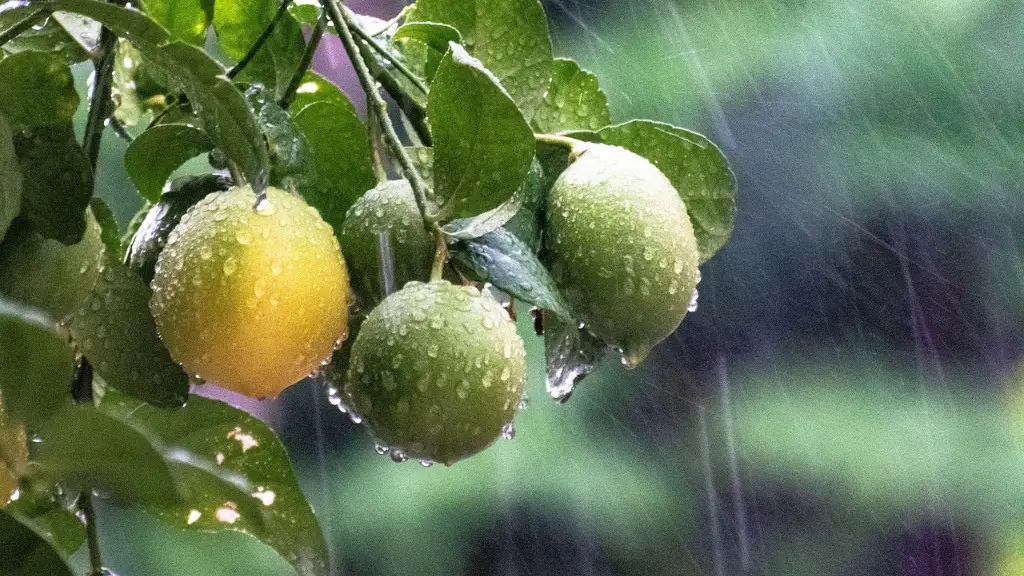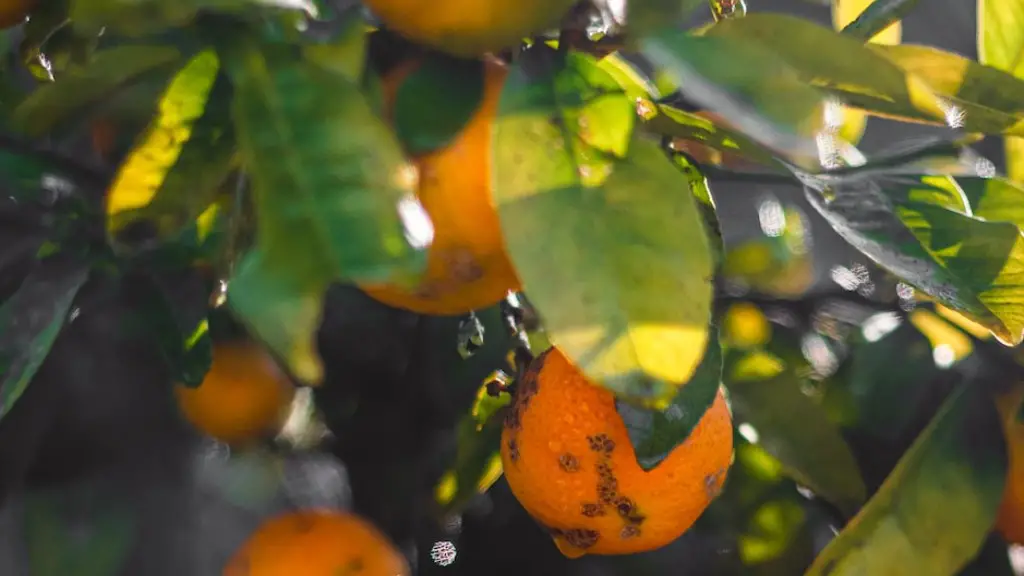Repairing a damaged apple tree trunk can be a difficult process, but with the right tools and knowledge it doesn’t have to be. Before fixing the damaged area, it is important to assess the problem and determine what caused the damage in the first place. The following guide will help you understand the process and make sure that the repairs are successful.
First, the affected area should be identified and examined. This can be done by tracing the damaged part up and down the trunk. The extent of the damage should be determined and areas that are weakened must also be detected and observed. Care should be taken not to worsen the damage.
Once the extent of the damage has been determined, appropriate Apple tree trunk repair methods must be chosen. If the bark has been completely lost, a process called ‘grafting’ should be used. This involves taking a stem from another apple tree and attaching it to the damaged part. The stem should be tied tightly with strips of cloth or twine, and the process should be repeated for other areas of damage.
The healthy stem should then be treated with a fungicide to prevent any further damage, and the affected area should be wrapped with a protective covering. The material should be changed periodically to protect the area against pests or diseases. This also ensures that the appropriate climate and moisture levels are maintained.
Once the bark has been repaired and the area is protected, pruning should be used to ensure that the tree is in the correct shape. Branches that have been damaged or weakened should be removed, and those that are healthy should be trimmed to promote good air circulation. Pruning should also be used to control the size and shape of the tree.
The damaged area should also be fertilized to promote proper growth. Organic fertilizers such as manure or compost can be used, or a special mixture of fertilizers can be applied if needed. The fertilizer should be given in smaller doses at regular intervals to avoid damaging the tree’s roots.
Finally, the repaired area needs to be monitored to make sure that it is not deteriorating. If new damage is noticed, it should be addressed and the same steps should be followed. This will help ensure that the tree remains healthy and produces good fruit.
Grafting
Grafting is the process of taking a stem from a healthy apple tree and attaching it to the damaged part of the trunk. The stem should be from the same cultivar, as this ensures the best results. The stem should be cut at an angle and attached to the damaged area with a tie, such as a cloth strip or twine. The graft should be kept in a moist area until it takes root and grows into the trunk.
The grafting process should also be monitored closely to make sure it is successful. The scion should be properly protected from pests, birds, and extreme temperatures. The site should also be checked periodically to make sure that the tie is secure and that the graft has taken root.
The graft should be cut back after several weeks to encourage branching. This encourages the new stem to grow and blend in with the trunk. The graft should be monitored closely to make sure that it is developing properly and that there are no signs of disease.
Once the graft has taken root, the scion should be pruned back and the new growth should be monitored closely. If growth is healthy, the new stem should eventually blend in with the rest of the trunk. If the graft dies, a new graft must be applied.
Grafting is a useful technique for repairing a damaged apple tree trunk. It is important to choose the right scion, and to make sure that the graft is secured and monitored closely for signs of disease.
Pruning
Pruning is an important part of the process of repairing a damaged apple tree trunk. It is used to encourage healthy growth, to control the size and shape of the tree, and to ensure good air circulation. Pruning is also used to remove dead or damaged branches, and to reduce the overall size of the tree.
The best time to prune an apple tree is in the late winter or early spring. This is when the tree is dormant and is most suited to the pruning process. Branches should be cut back to a healthy bud, and any dead or damaged branches should be removed.
The pruning process should also be done in a way that promotes healthy growth. Each branch should be cut back to the bud, leaving an outward-facing bud so that it can be reached for the next pruning season. It is also important to avoid pruning too much, as this can slow down the tree’s growth.
It is important to use the proper tools when pruning an apple tree. A sharp pruning saw or loppers should be used, and any tools should be disinfected beforehand. It is also important to use appropriate safety gear, such as gloves and eye protection.
Pruning should be done carefully to avoid damaging the tree. All cuts should be made cleanly and away from any bark, and all cuts should be angled slightly down, away from any buds or buds. Any wounds should be treated with a pruning compound to protect them from disease.
Pruning is an important part of repairing a damaged apple tree trunk. It is important to use the right tools and techniques, and to be careful when pruning to avoid damaging the tree.
Fertilization
Fertilization is another important part of the process of repairing a damaged apple tree trunk. Fertilizer should be applied to the tree’s roots to encourage healthy growth, and to ensure that all nutrients are available for the tree to grow properly.
Organic fertilizers, such as manure or compost, can be used to fertilize an apple tree. A special mixture of fertilizers can also be used, and this should be tailored to the needs of the particular tree. The fertilizer should be applied in smaller doses at regular intervals, to avoid damaging the tree’s roots.
It is also important to make sure that the tree is getting enough water. If the soil is too dry, the fertilizer won’t be effective, and will instead damage the roots. The soil should be checked regularly to ensure that it is moist but not saturated.
Fertilization should also be done carefully, as too much fertilizer can be damaging to the tree. If a fertilizer with a high nitrogen content is used, it should be used sparingly, and a fertilizer with a low nitrogen content should be used for regular fertilization.
Fertilization is an essential part of repairing a damaged apple tree trunk. It is important to use the right type and amount of fertilizer, and to make sure that the soil is well-watered.
Monitoring
Once the damaged area has been repaired and the tree has been pruned and fertilized, it is important to monitor the tree to make sure that it is not deteriorating. If new damage is noticed, it should be addressed, and the steps outlined above should be followed.
The tree should also be monitored for signs of disease or pests. Any signs of disease should be addressed immediately, and organic or chemical treatments can be used if needed. Pests can be controlled using organic methods, such as traps or deterrents, or chemical methods, such as sprays.
The tree should also be monitored for signs of stress. This can be done by checking the leaves for signs of discoloration or curling, and by inspecting the roots for any signs of decay.
It is also important to monitor the tree to make sure that it is getting enough water. If the soil is too dry, the fertilizer won’t be effective, and the tree won’t be able to grow properly.
Monitoring the tree is an important part of the process of repairing a damaged apple tree trunk. It is important to check for signs of disease, stress, and pests, and to make sure that the tree is getting enough water.




